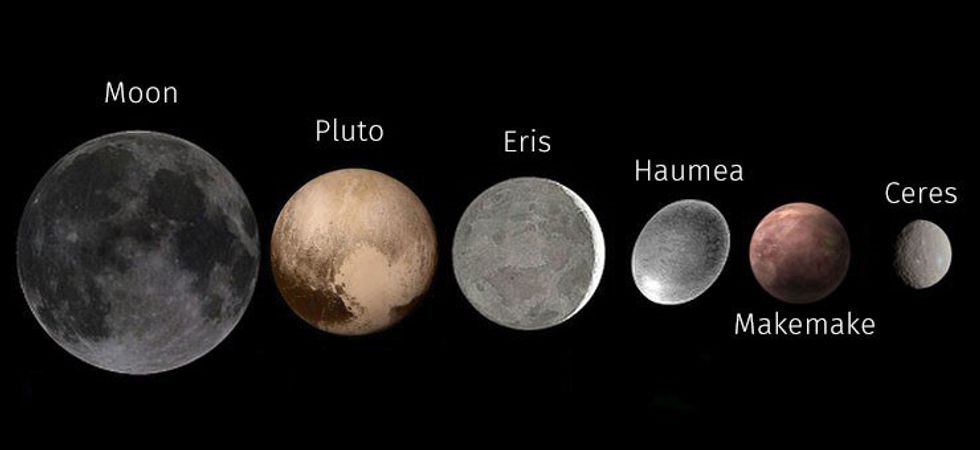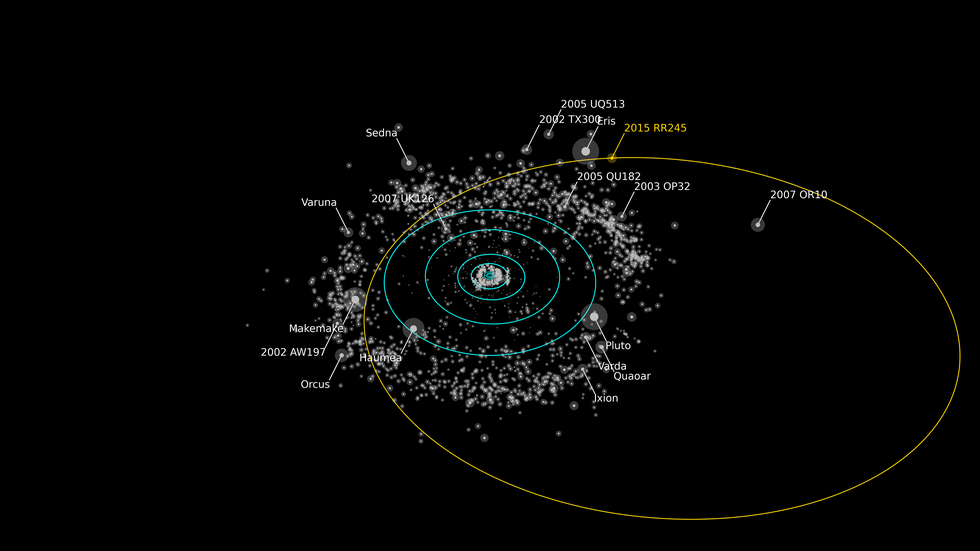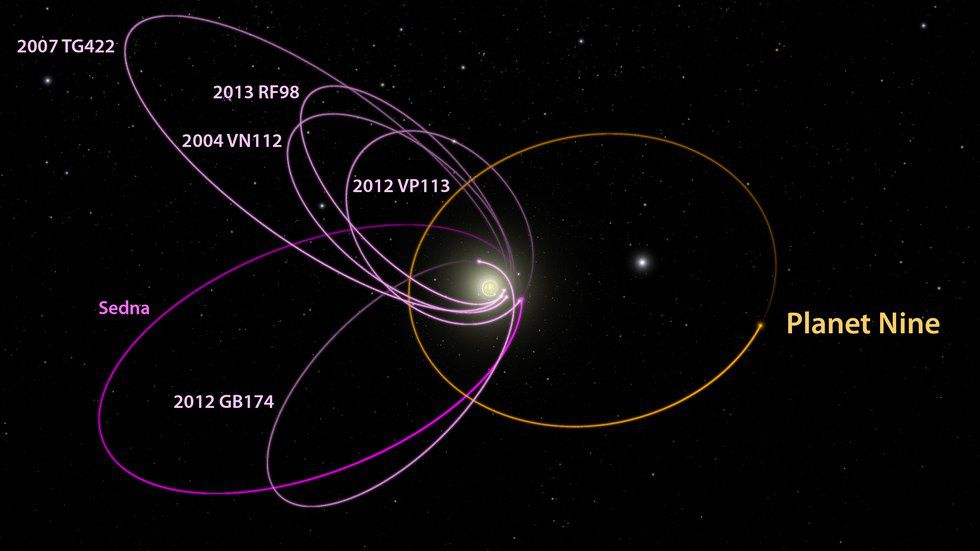Astronomers are constantly making new and exciting discoveries, and not just about deep space or other galaxies or black holes. Some of their most important, most impressive, and most exciting discoveries come from our own solar system, practically in our own backyard.
Dwarf planets, for example, while only five have been officially accepted as meeting the criteria to be designed “dwarf planets”, there are dozens of objects orbiting our Sun that are being considered- and that’s not to mention the hundreds, if not thousands that are estimated to exist in the furthest reaches of our solar system, in the depths of the Kuiper Belt.
Most of the dwarf planet candidates are known as “trans-Neptunian
objects” or TNOs, because they are objects that orbit our Sun outside the orbit
of Neptune, millions and millions of miles away from the center of our system.
More TNOs are discovered all the time, and one was announced only a short time
ago, currently designated “2014 UZ224”.
Behind this long, unimaginative, and frankly boring name is
something exciting. This new TNO is another in an ever-increasing list of dwarf
planets that have caught the eye of astronomers because of their peculiar
orbits.
TNOs should have relatively boring orbits: regular, nearly
circular, and completely uninteresting. They’re so far from any large object circling
the sun that there shouldn’t be any major gravity fields affecting how they
move through space… except for the sun and, occasionally, one another, of
course.
But that’s not what scientists are finding. Instead, an unusually large percentage of these TNOs, including 2014 UZ224, have bizarrely irregular orbits. Instead of being nearly-circular, they form enormous, ridiculous elliptical patterns, passing insanely close to the sun during part of their cycle, and insanely far away during the rest of their existence. And these orbits aren’t just random- they line up with one another, in very suspicious ways.
The only possible explanation for all of this is that there
is another, so-far unexplained source of gravity acting upon these TNOs, large
enough to influence their orbits in enormous ways, but far, far away from the
inner solar system. The most probable source: an unknown, very large planetary
body orbiting our sun, somewhere in or beyond the Kuiper Belt.
This mysterious, hypothetical object, nicknamed “Planet 9”,
is estimated to be much larger than the Earth, at least ten times as massive as
our own planet and possibly approaching the size of Neptune. It might be a gas
giant, like the four largest planets we already know of, or it might be an
enormous rocky world, more similar to Mercury or Mars. Some have even suggested
it might be the core of a long-dead gas giant that lost all of its gas, leaving
behind the solid core as a grim reminder of a massive, Jupiter-sized behemoth.
Nobody has been able to prove the existence of Planet 9 yet,
but the evidence keeps stacking up. Every time a new TNO is discovered with a
bizarre orbit, it points to the existence of that elusive ninth planet, hiding
somewhere out there, just out of sight. It’s only a matter of time until we
find something.























